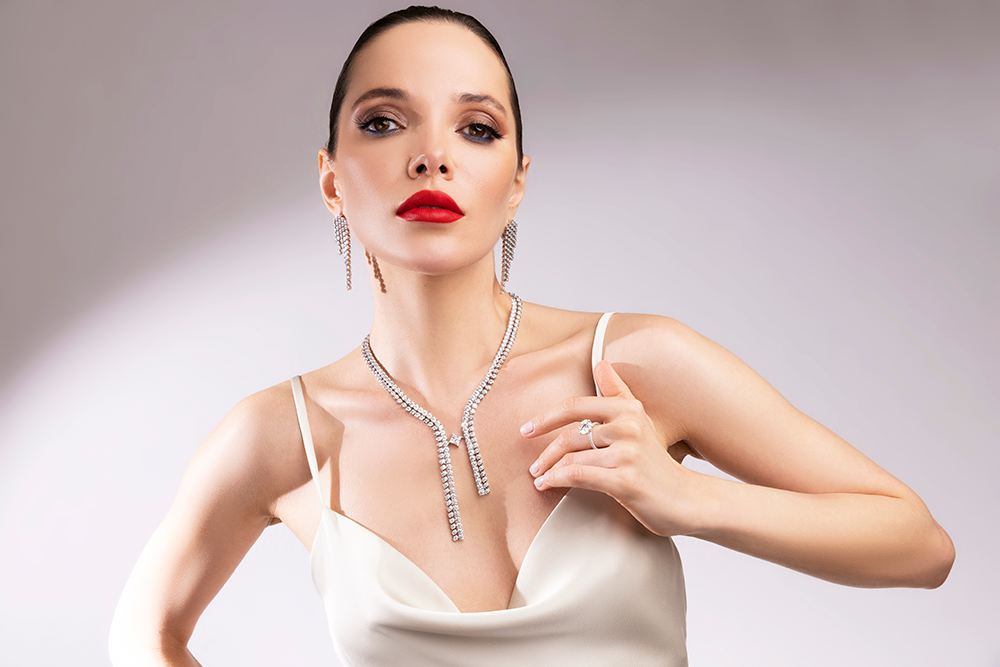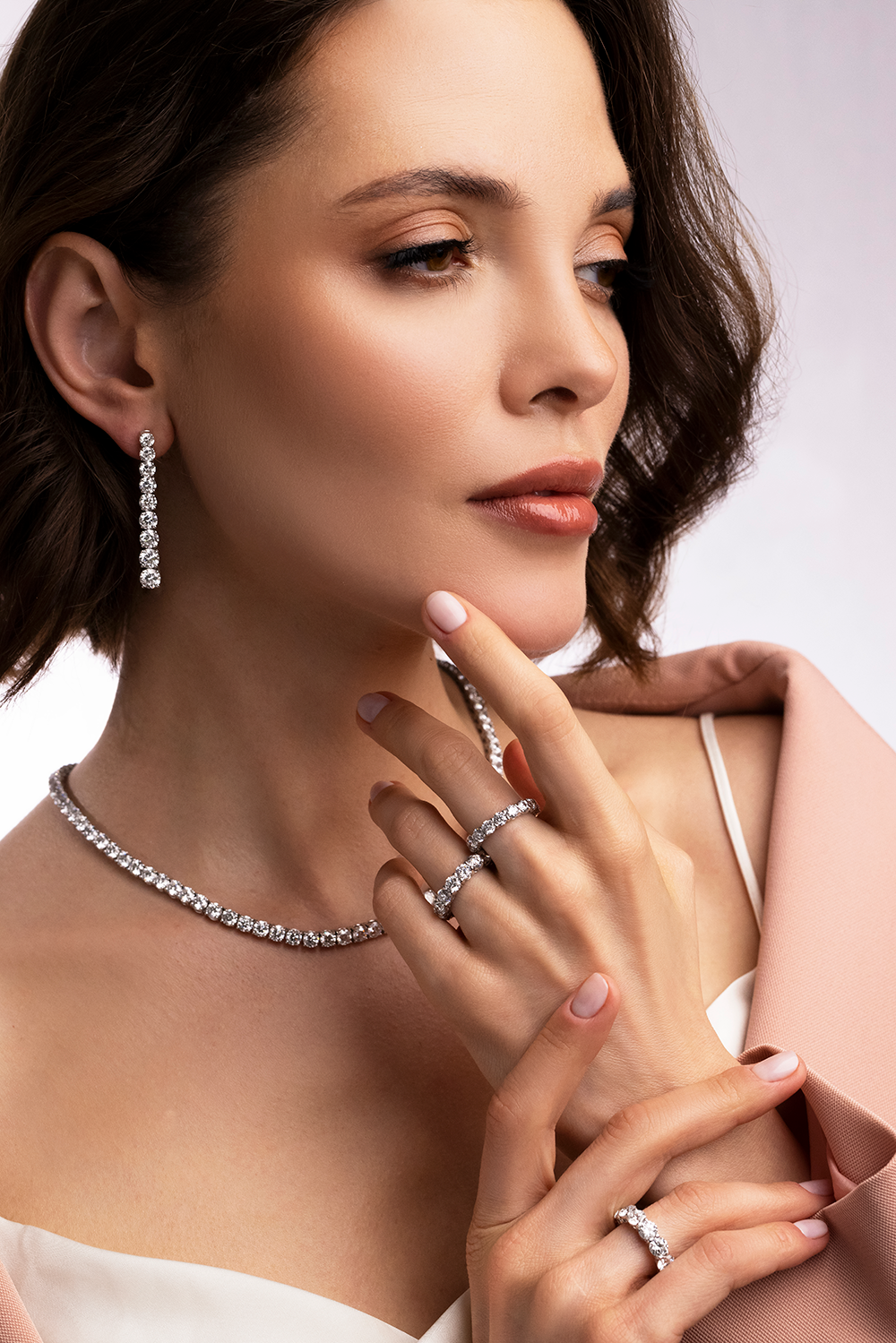
Diamonds come in various colours, and the absence of colour is highly valued. Graded on a scale from D (colourless) to Z (light yellow or brown).

“We look to inspire the entire diamond industry to evolve in a brave new direction”.

Round Brilliant
Classic and timeless, the round brilliant cut is the most popular diamond shape. Its 57 facets maximise sparkle and brilliance

Oval
A variation of the round brilliant, oval-cut diamonds offer a similar brilliance but with a more elongated shape.

Radiant
Combining the elegance of emerald cuts with the brilliance of round cuts, the radiant cut is rectangular or square with trimmed corners.

Emerald
Rectangular with cut corners, the emerald cut features long lines that create a hall-of-mirrors effect. It emphasises clarity and is popular for its understated elegance.

Pear
Resembling a teardrop, the pear-shaped diamond combines the round and marquise shapes, offering a unique and elegant appearance.

Cushion
A square or rectangular shape with rounded corners, the cushion cut is known for its vintage charm and ability to showcase the diamond’s clarity.

Princess
Square or rectangular in shape, the princess cut is known for its sharp corners and brilliant facets, offering a modern and elegant look.

Asscher
Similar to the emerald cut, the Asscher cut is square with cut corners. It has a vintage appeal and a stepped square pattern.

Marquise
An elongated shape with pointed ends, the marquise cut maximises carat weight and creates a flattering, elongated appearance.

Heart
Symbolising love and romance, heart-shaped diamonds have a distinctive silhouette with a cleft at the top and a rounded bottom.

Round

Oval

Radiant

Emerald

Pear

Cushion

Princess

Asscher

Marquise

Heart

Round

Oval

Radiant

Emerald

Pear

Cushion

Princess

Asscher

Marquise

Heart
To maintain consistency and quality, we define a precise target weight with a minimal tolerance range. The chart below outlines these tolerances across all shapes, ensuring each sustainably created diamond meets our standards. For pieces featuring multiple stones, total carat weight is calculated by summing the minimum and maximum tolerances of each diamond included.


























